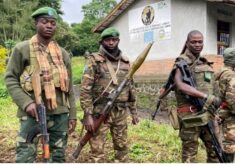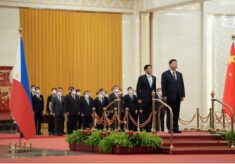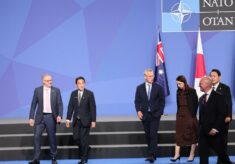The much debated release of the Italian humanitarian NGO operator, Ms Silvia Romano, is not only good news per se, but also a significant clue to the dynamics taking place within the global jihadist movement. In fact, this galaxy is currently in a twin process of fragmentation and redeployment.
Fragmentation, because the internal ideological debate between the two main groups (the historical Al Qaida and its former substitute and then competitor Islamic State) is moving from a “war of words” on the interpretation of Salafism towards a “war with weapons”. Redeployment, because from the Mashreq and the Gulf the centre of gravity is moving West (sub-Saharan Africa) and East, towards the Afghan theatre and in Muslim Asia, in particular the Philippines.
As far as the process of fragmentation and internal conflict is concerned, it takes place historically between a “modern” interpretation of jihadism and a “medieval” or “premodern” one. The first is Al Qa’eda, opposed for example to a use of terrorism against Muslims (restricted interpretation of the doctrine of takfir, i.e. excommunication) and marked by a certain political pragmatism. The second premodern one is the hybrid constituted by ISIS, with an idea of Salafist violence and literalism (an extensive interpretation of the doctrine of takfir) between the anti-modern and the apocalyptic tendencies; not to speak about this other bitter internal debate internal to ISIS and exacerbated by an increasingly extremist leadership.
The release of Ms Romano can be read as a point in favour of the more pragmatic wing, both within the Shabaab (Harakat As Shabaab Al Mujahiddin – Movement of the Fighting Youth.) and within the jihadist galaxy, where the negotiation theme has always been emblematic. Negotiating is the litmus test of the relationship with the outside world and therefore of a specific jihadist identity: for the pragmatists the financial benefits far outweigh the value of a symbolic execution, because their recruitment relies more on politics than on apocalyptic violence. The relevance of this specific debate was already rekindled after the revelation of direct negotiations in Doha between the Taliban and the USA.
As far as redeployment is concerned, the focal point has thus moved above all to sub-Saharan Africa, that currently constitutes the true hub of jihadism. In this context, after the territorial obliteration of the Caliphate, the Islamic State managed to supplant partially the traditional presence of Al Qa’eda. The main instrument was an intensive and wild use of violence as means to define quickly and decisively socio-political situations, where communities undergoing a crisis of political representation had not a state to address, but rather transnational and highly ethnic contexts (e.g. Nigeria, Mali, Burkina Faso, Niger and Central African Republic) Today, however, particularly in West Africa, and especially in Mali, we are witnessing a counter-offensive by Al Qa’eda not only at military, but above all at political level. The latest issue of An-Naba (The News, the weekly of ISIS), accuses in fact Al Qa’eda (through its affiliate GSIM – Groupe de Soutien à l’Islam et aux Musulmans or JNIM: Jama’a Nusrat al-Islam wa al-Muslimin’ ) to have started a war in West Africa against the EIGS (Etat Islamique dans le Grand Sahara – Al Dawlat al Islamiat fi al Sahra’ al Kubraa), which had expanded in the last two years precisely at the expense of the GSIM. In recent months there have been numerous armed clashes between the two groups in the Sahel; an-Naba mentions especially those in northern (Kidal, Timbuktu) and central Mali (Segou and Mopti, the historical cradle of the Katiba Macina jihadist group), that borders the north of Burkina Faso and represents the corridor of all illicit trafficking to the Mediterranean.
The political debate has been further heated by the decision in recent months by GSIM leaders, Iyad Ag Ghaly and Amadou Kouffa, to agree to negotiate with the Malian government a process of transition and a possible exit from the war that has been ongoing since 2012. This is the context where the release of a western hostage occurred and this is precisely the confirmation of the greater political and military strength acquired by the most pragmatic wing in the struggle for hegemony within the jihadist galaxy. Especially considering similar dynamics in Afghanistan and Yemen. A second inference is that this could mean the return of pragmatists to power within Shabaab. The Shabaab were in fact born following the Ethiopian intervention in Somalia (2006), which was executed to crush the movement of Islamic Courts born in 1991. Precisely because they were born as a more “military” response to an external interference, the Shabaab have long hesitated after the growth of ISIS between an original loyalty to Al Qa’eda and that towards its most apocalyptic mutation. The pragmatic wing had received a blow with the failure by one of its leaders, Mukhtar Robow, to successfully return to Somalia’s civilian life as political leader. The attempt ended with his arrest, on inter-African input, at the end of 2018. In these months the release of Ms Romano could open a new space for pragmatic negotiations.
Fabio Nicolucci
Press and Public Information Officer, EUCAP Mission Sahel Mali. Member of the Scientific Board of the NATO Defense College Foundation.



























